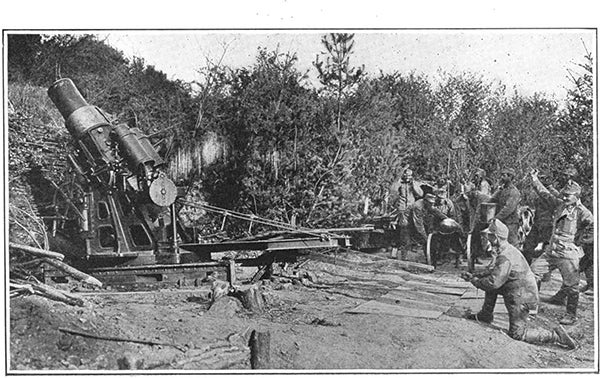This article was published in Scientific American’s former blog network and reflects the views of the author, not necessarily those of Scientific American
Reported in Scientific American, this Week in World War I: September 18, 1915
The cover of this week’s issue of the magazine shows the interior of one of the forts surrounding the fortified town of Przemyśl, now in Poland, but in 1915 in the Galician province of the Austria-Hungarian empire. Captured by the Russians after a gruelling and lengthy siege, the town was recaptured by German and Austria-Hungarian forces on June 3rd 1915.
The Central Powers (as Germany and Austria-Hungary were called) had a great advantage over the Allies (France, Russia, Britain) and Belgium when attacking fixed fortifications: large road-portable howitzers, firing shells of 30.5 centimeter and 42 centimeter caliber. This image shows the nose of one of these larger shells poking through the concrete and steel roof of one of the forts. As with perhaps a quarter of all shells fired during the First World War, this giant shell was a dud and failed to explode. The soldier tasked with climbing up the ladder to hold up a 7-centimeter shell for comparison (perhaps an overly theatrical gesture) doesn’t look too confident that the giant shell is no longer dangerous:
On supporting science journalism
If you're enjoying this article, consider supporting our award-winning journalism by subscribing. By purchasing a subscription you are helping to ensure the future of impactful stories about the discoveries and ideas shaping our world today.
“This remarkable photograph shows an unexploded 42-centimeter shell, lodged in the roof of a subterranean passage in the middle of one of the forts. The shell had made a clean hole through twenty feet of reinforced concrete. The spiral scoring on the surface of the shell shows how the projectile was revolving as it bored its way through.”

The giant howitzers made by Skoda in 305 millimeter (shown here) and 420 millimeter caliber gave the Austria-Hungarian and German troops a significant advantage in attacking hardened fortifications.
Image: Scientific American, September 18, 1915
Our full archive of the war, called Scientific American Chronicles: World War I, has many articles from 1914–1918 on the different theaters of the war. It is available for purchase at www.scientificamerican.com/products/world-war-i/